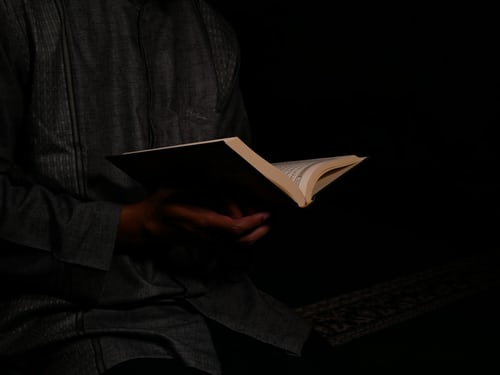Inspiring Older Readers
 posted on 21 Jan 2018
posted on 21 Jan 2018
The Inheritors by William Golding
When I wrote about John Carey’s excellent biography of William Golding HERE I said that I planned a systematic rereading of Golding’s novels in chronological order. Of course, I got sidetracked and things didn’t quite work out that way. But as I reread Lord of the Flies just a year or two back, I thought I would at least get started and so began with Golding’s second novel, The Inheritors. (Letterpress has already featured Golding’s third novel, Pincher Martin, HERE.)
For his second novel William Golding turned his attention to prehistory and set himself arguably the greatest formal challenge of his writing career: how to enter the minds of two groups of people, both of which lack a language to describe their lives – at least, a language that we can be party to. They are a tribe of Neanderthal people, and one of ‘New People’ – ‘others’, the more evolved Homo Sapiens who will eventually sweep aside the Neanderthals.
It is now known that anatomically modern Homo Sapiens and Neanderthal people co-existed for over 5,000 years. There is some disagreement, however, regarding the role that Homo Sapiens may have played in the extinction of Neanderthal man. Writing in the 1950s Golding takes a characteristically bleak view: he uses this scenario to probe the roots of racism and the idea of ‘the other’. The ‘New People’ may be anatomically advanced but to the Neanderthals they are inscrutable ‘devils’ who cannot be trusted, an enigmatic new breed, ‘morally’ stunted, as likely to hunt one’s young for food as they are to keep them as playthings.
Begun in 1954, just months after Lord of the Flies was published, The Inheritors is by any definition an extraordinarily ambitious book. Golding’s daughter has since gone on record to offer a between-the-lines reading of the novel. Setting aside the immense historical distance it looks back over and the formal challenges its writing posed for her father, she maintains that there is a much more immediate reading concealed within it. The barely articulated fears of the Neanderthal people are she believes her father’s own fears, informed by his wartime experiences and his deeply held conviction that the capacity for cruelty lies deeply and inextricably coiled within us, right from the earliest stages of evolution – an ineradicable species guilt from which we cannot escape, no matter in what direction we might continue to evolve. She also suggests that this desperately dark and pessimistic view was to some degree fuelled by Golding’s own guilt about his alcoholism and the self-loathing this occasioned.
The Neanderthal characters – and they are characters, incidentally, as fully realised as their circumstances allow, which is one of the book’s great achievements – struggle to perceive what is happening to them and around them. They lack a language to articulate these experiences to each other and while at times they seem to exist on the cusp of intelligible speech the Neanderthals communicate primarily by visualising what they refer to as ‘pictures’, perhaps even ‘transmitting’ these to each other.
Consequently – and intentionally, one assumes – what is happening is not always clear. The reader sees through a mist, much as the Neanderthal people do. This is undoubtedly clever, often virtuosic, but I found it also makes for rather a lot of repetition – particularly in the descriptive writing, the terrain, landmarks and landscape, and their importance in the Neanderthal ‘world view’. I remember that on first reading many years ago I found this confusing and sometimes congested, and I did on rereading too. But I think I may be in the minority here. Many still consider The Inheritors to be one of Golding’s greatest achievements.
Reviews at the time of its publication came in very slowly and it is interesting to note, as Carey does in his biography, that in 1956 a new Golding novel was not yet news, not yet an occasion. By and large these reviews were complimentary and opinion gradually recognised the virtuosity of the book. But there is also a note of grudging admiration, as if the achievement of the book could be recognised but without any great feeling of affection or enjoyment. I’m afraid this is still very much how I feel towards it. It has some marvellous moments, but overall seems much longer than it actually is, and much of it seems to be treading water while Golding works out how on earth to extricate himself from a languageless limbo of his own making. It still isn’t a book that moves me.
But even with these reservations, what I will say is that having Carey’s wonderfully illuminating biography still fresh in the back of my mind made the experience far more satisfying than would otherwise have been the case. I look forward with fresh interest to working my way through the seven novels that I think can be regarded as Golding’s first and greatest period – those published between 1954 and 1979.
Alun Severn
January 2018